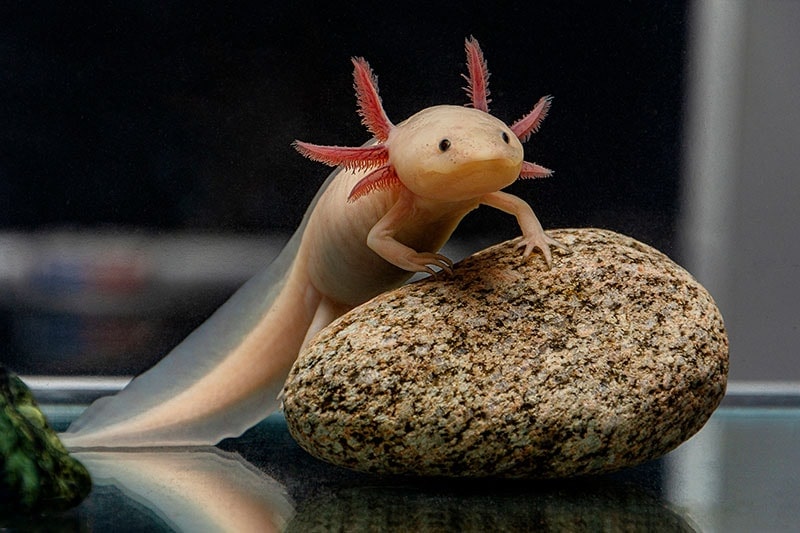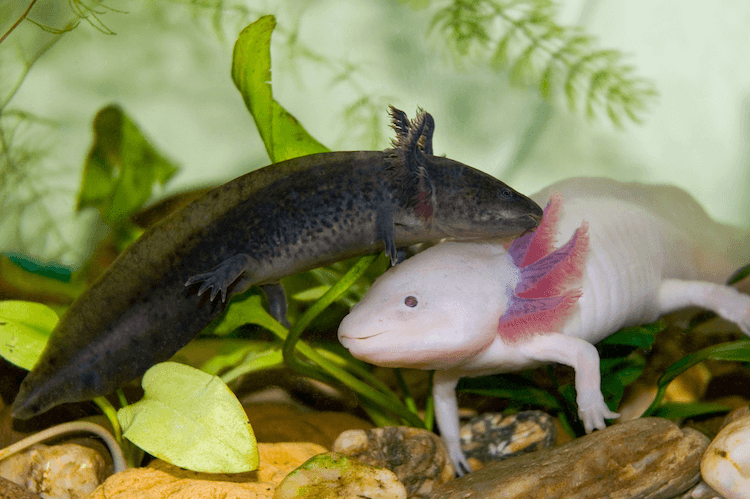How Many Axolotls Are in Captivity?
Axolotls are fascinating amphibians native to Mexico, known for their unique ability to regenerate lost body parts. These captivating creatures have gained popularity as pets and research subjects due to their distinctive features and captivating behavior. One common question that arises among enthusiasts and researchers is, "How many axolotls are in captivity?" In this article, we will explore the population of axolotls kept in captivity, shedding light on their conservation status and the importance of preserving their natural habitat.

Axolotls
1. The Appeal of Axolotls:
Before delving into the number of axolotls in captivity, let's first understand why these creatures have captured the interest of people around the world.
Axolotls possess remarkable characteristics, including their permanently aquatic nature and neotenic features, meaning they retain juvenile traits into adulthood.
Their vibrant colors, external gills, and the ability to regrow limbs make them visually striking and captivating to observe.
2. Axolotls in the Wild:
To comprehend the population of axolotls in captivity, it is crucial to grasp their situation in the wild.
Axolotls are native to the Xochimilco and Chalco regions in Mexico, particularly the ancient lake of Xochimilco.
However, due to the introduction of invasive species, pollution, habitat destruction, and water extraction, their natural habitat has significantly deteriorated.
Consequently, the wild population of axolotls has declined dramatically, leading to concerns about their survival.
3. Captive Breeding Programs:
Recognizing the need to protect and preserve the axolotl species, various institutions and individuals have established captive breeding programs worldwide.
These programs aim to maintain genetically diverse populations of axolotls in captivity while raising awareness about their conservation status.
These breeding efforts contribute to scientific research, provide individuals with the opportunity to keep axolotls as pets, and act as a potential source for reintroducing axolotls into the wild.

Axolotls
4. Axolotl Population Estimates:
Accurate data on the exact number of axolotls in captivity can be challenging to obtain.
The worldwide population of captive axolotls fluctuates and varies among institutions, private breeders, and individuals.
However, estimates suggest that thousands of axolotls are held in captivity across the globe.
These estimates encompass both research facilities and private collections, which often focus on specific color variations or genetic traits.
5. Axolotls in Research:
Axolotls have become essential research subjects in various scientific disciplines due to their extraordinary regenerative abilities.
Studying axolotls' regrowth of limbs, spinal cord repair, and tissue regeneration provides insights that could potentially be applied to human medicine and regenerative therapies.
Consequently, research institutions maintain axolotl populations for experimentation purposes, aiding advancements in biology, genetics, and biomedical science.
6. Conservation Challenges:
While the captive population of axolotls offers hope for their long-term survival, conservation challenges persist.
Preserving the genetic diversity of captive axolotls and ensuring their well-being require responsible breeding practices, suitable habitats, and appropriate care.
Additionally, addressing the threats to their natural habitat, such as water pollution and habitat loss, remains crucial to the species' overall conservation efforts.
In conclusion, while obtaining precise numbers on the population of axolotls in captivity can be challenging, it is evident that these extraordinary creatures are being held by numerous institutions, breeders, and enthusiasts worldwide. Captive breeding programs play a vital role in preserving the axolotl species and advancing scientific research. However, it is essential to continue raising awareness about the conservation challenges faced by axolotls and their diminishing wild population. By combining efforts in captive breeding and habitat conservation, we can contribute to the long-term survival of these captivating amphibians and their unique regenerative abilities.